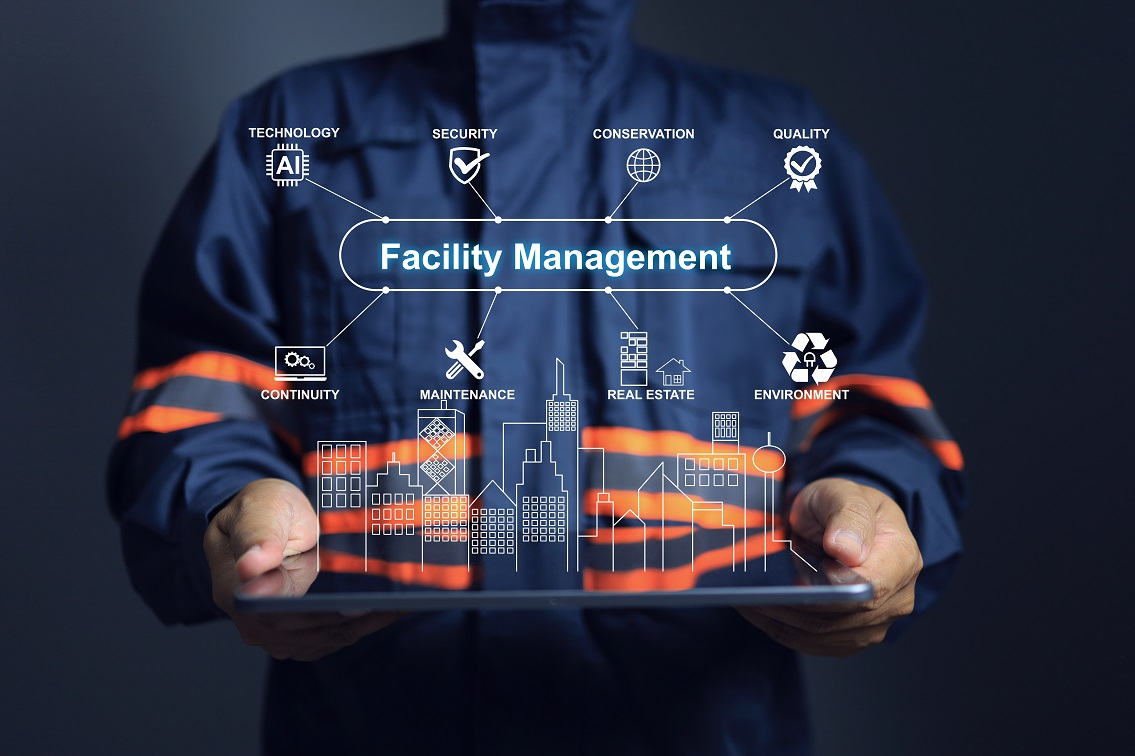The Role of Facility Management in Sustainable Operations
The Role of Facility Management in Sustainable Operations
Blog Article
Trick Patterns Shaping the Future of Facility Monitoring in 2024
As we look ahead to 2024, the landscape of facility administration is positioned for substantial change, driven by a number of crucial fads. The combination of smart building modern technologies and a shift towards data-driven decision-making pledge to enhance operational efficiency while prioritizing sustainability in practice.
Smart Building Technologies

Smart building technologies include a broad variety of systems, including smart lighting, HVAC controls, and safety systems. By incorporating these systems, facility supervisors can monitor and adjust specifications in real-time, resulting in considerable decreases in power waste and functional prices. As an example, clever sensing units can discover tenancy degrees and change illumination and temperature appropriately, making certain that energy is only made use of when essential.
In addition, these modern technologies promote boosted information collection, enabling organizations to track usage patterns and recognize chances for additional enhancements. The implementation of smart structure innovations not only contributes to sustainability goals yet likewise creates much healthier job atmospheres that can improve worker productivity and complete satisfaction.
As we relocate into 2024, the fostering of smart structure technologies will likely speed up, showing a wider shift in the direction of more smart, responsive, and lasting center administration practices.
Data-Driven Choice Making
Progressively, organizations are leveraging data-driven choice making to improve facility administration practices. By using data analytics, facility supervisors can obtain workable insights that significantly enhance functional performance and resource appropriation. The integration of innovative technologies, such as IoT sensing units and real-time surveillance systems, allows the collection of substantial amounts of information on structure performance, tenancy rates, and energy intake.
This wealth of info permits facility supervisors to recognize trends, anticipate upkeep needs, and proactively address issues prior to they escalate. Anticipating analytics can forecast equipment failures, minimizing downtime and repair costs. Furthermore, information visualization devices help with far better interaction amongst stakeholders, guaranteeing that notified choices are made collaboratively.
Furthermore, data-driven strategies enhance critical planning by enabling facility managers to examine the performance of current methods and make notified options pertaining to investments in innovation or framework. As companies progressively focus on operational excellence, data-driven decision making is poised to become a cornerstone of successful center administration methods in 2024 and past. Eventually, the capability to take advantage of data properly will equip organizations to produce more efficient, efficient, and resilient centers.
Sustainability and Environment-friendly Practices
The emphasis on data-driven decision making normally straightens with the expanding focus on sustainability and environment-friendly practices within center monitoring. As companies progressively prioritize ecological duty, center managers are leveraging analytics to optimize source usage, decrease waste, and decrease carbon impacts. This critical technique enables the assimilation of energy-efficient systems, such as LED lights, clever heating and cooling controls, and eco-friendly power sources right into facility procedures.
Additionally, the application of lasting methods extends past energy consumption. Center managers are advertising and adopting green materials reusing efforts to develop a circular economy within their centers. This not only boosts the environmental account of the organization but also cultivates a society of sustainability amongst workers.
Compliance with ecological laws is another critical aspect driving the fostering of eco-friendly practices. By using information analytics, facility managers can keep an eye on compliance metrics and determine areas for enhancement, ensuring adherence to international and regional sustainability standards.
Hybrid Job Designs
A substantial shift towards crossbreed job versions is improving the landscape of facility administration in 2024. This standard incorporates remote and in-office work, necessitating a reevaluation of you can try here space application, source allotment, and worker involvement techniques. Organizations are significantly recognizing the significance of versatile offices that provide to varied demands and choices.
Center managers must adapt by implementing functional office styles that sustain collective initiatives while offering locations for focused job. This includes the combination of technology to help with smooth communication and cooperation among remote and in-office staff members. Smart building services, equipped with sensors and analytics, allow for real-time tracking of room visit their website usage, enabling organizations to maximize their environments effectively.
Additionally, crossbreed work versions stress the demand for reliable center monitoring that focuses on employee experience. In significance, the crossbreed job design is reinventing center monitoring, urging a positive technique to satisfy the developing demands of the labor force.
Boosted Passenger Health
As organizations embrace hybrid job designs, an enhanced emphasis on passenger wellness is becoming indispensable to center monitoring approaches. Facility Management. This change recognizes that a healthy and completely satisfied workforce straight affects productivity and retention prices. Facility supervisors are now focusing on settings that promote physical and psychological well-being, incorporating aspects such as natural lighting, biophilic style, and available wellness sources

Innovation plays an important function in this the original source development. Smart structure systems can keep track of ecological aspects and change settings in real-time, guaranteeing ideal comfort levels - Facility Management. Additionally, comments mechanisms, such as occupancy sensing units and staff member studies, allow center supervisors to continuously fine-tune wellness efforts based on owner demands.

Final Thought
In 2024, the future of facility monitoring will be significantly influenced by the combination of smart building technologies and data-driven decision-making, fostering improved operational efficiency. These trends collectively underscore the evolving landscape of center monitoring in feedback to modern obstacles and possibilities.
Center supervisors are promoting and embracing eco-friendly materials reusing campaigns to produce a circular economy within their centers.A significant shift in the direction of crossbreed work models is reshaping the landscape of facility management in 2024.Moreover, crossbreed work models stress the requirement for effective center administration that prioritizes staff member experience.As organizations embrace hybrid job versions, an increased focus on owner health is becoming indispensable to facility management techniques.In 2024, the future of facility administration will be dramatically influenced by the assimilation of wise building technologies and data-driven decision-making, cultivating enhanced functional efficiency.
Report this page